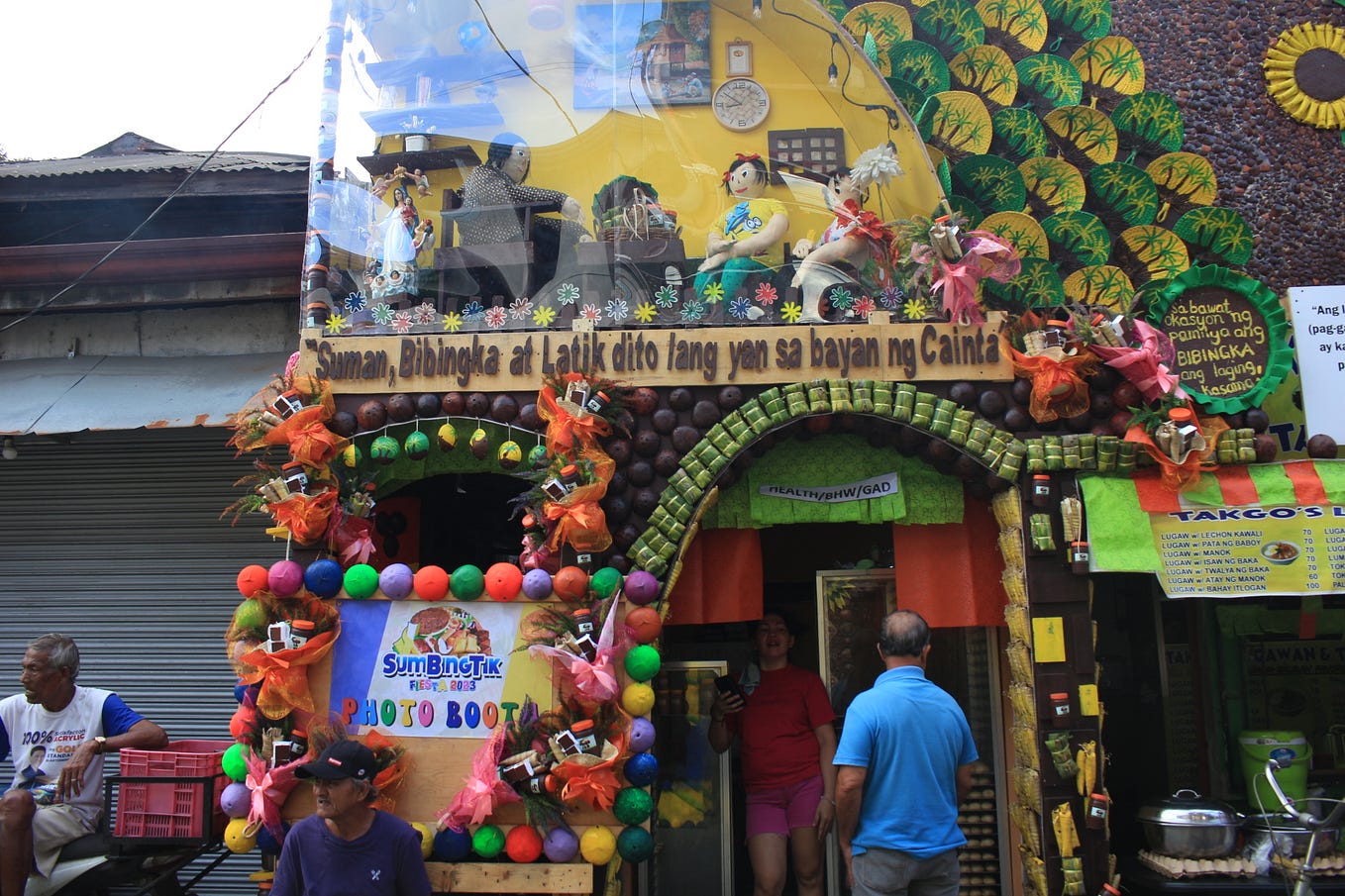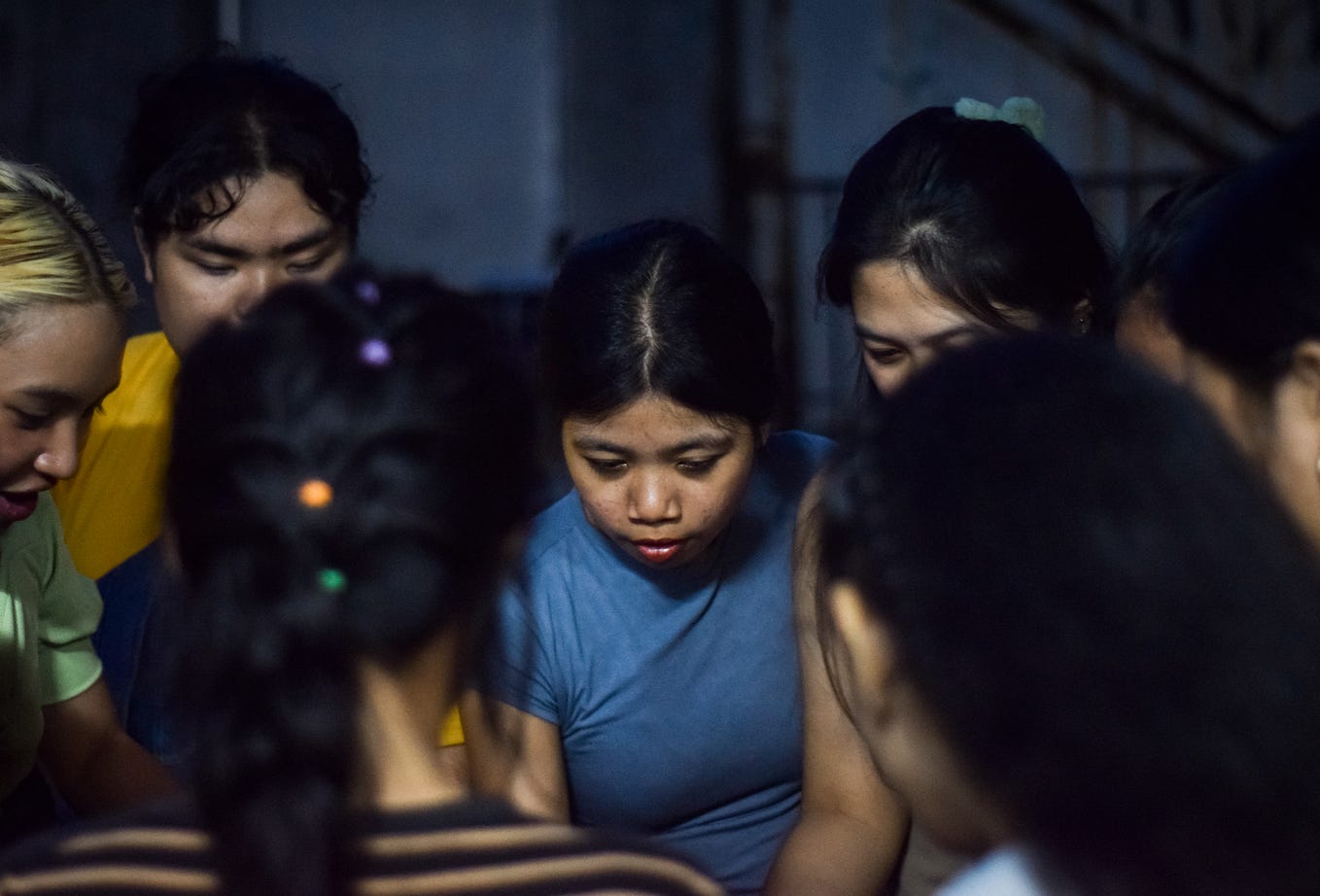Feature
Weaving Journey: Nanay Loli’s 46 Years of Crafting Timeless Pamaypay
by Kathlen Hitosis
Despite the existence of technologies that can beat the heat, such as air conditioners, electric fans, and portable, rechargeable fans, there remains a steadfast community dedicated to the craft of producing traditional fans. These native fans are highly valued and in demand among many Filipinos, an essential part of the culture that is endlessly integrated.
Native fan, also known as ‘’Pamaypay’’ is crafted from the high-quality palm leaves of Anahaw, the Philippines’ National Leaf. Commonly, these can be spotted in parks, near churches, homes, and various places across the country. Beyond this, pamaypay has become an ideal wall decoration, adding a perfect touch for beach weddings, summer events, and relaxing lounging areas by the shore.
There’s a lot of pamaypay makers all over the country that you can find in Laguna, Batangas, Mindoro, and other places, but, wait a minute, why don’t we let the wind of pamaypay blow us to Quezon Province to know the story of a native fan maker?
Let’s weave into the story of an old lady, like how she weaves to make a fan. Apolonia Libranda Grajo, also known as Loli, who lives in Barangay Concepcion Lopez, Quezon. Loli has five children, and most of them already have their own families, living nearby while the other one was in Taboc City.
At the age of 67, she stood as the sole artisan in the barangay, crafting the native fan after others had stopped for reasons she didn’t know. Meanwhile, Loli’s acquaintances from their community and a few friends from Baranagay Kinalin Lopez, were also engaged in making fans.
Among the people gathered, someone is teaching how to make a fan, but Nanay Apolonia’s method of crafting fans is truly noticeable and distinct. She has been making fans out of anahaw for four decades and six years, self-taught in her own method.
‘’Kumuha ako ng isang pamaypay na buo na, kinalag [kinalas-kalas] ko ‘yun, no’ng pagkalag ko, diretso binuo ko ulit. Edi ‘yun may mga bakat-bakat na, sinundan ko na lang ‘yun,’’ Nanay Loli said.
(I took an already-assembled fan and deconstructed it, then put it back together right after. I just followed the pattern)
46 years ago, she was thinking about finding work that she could do at home while taking care of her firstborn, until she noticed her friends making pamaypay. She felt that she might be productive at it while taking good care of her child.
She collects pamaypay materials, like Anahaw and Buri Palm leaves, from nearby mountains. Early in the morning is the perfect chance to head up, and being alone makes her very proud because she can handle it despite her age. On rare occasions, when she can’t make it to the mountain, she just orders the materials from someone.
Nanay Loli had no idea what would happen to her before making pamaypay. Unforgettably, one of the huge challenges she usually faces is collecting and drying the palm leaves on rainy days. While gathering these leaves in the mountains, she caught the flu due to the rain. Besides these, drying the palm leaves takes about four days, as she should not let the leaves wet to ensure the fan’s quality isn’t affected.
‘’Sa likod ng paggawa ko ng pamaypay, ‘yung pangunguha ng pang-gawa nito ang pinakamahirap. ‘Pag naulan kasi ay nagkakasakit ako dahil naaabutan ako nito. Dagdag pa ang pagbibilad o pagpapatuyo ng dahon, ‘pag uulan, edi tatakbo para pinawin ‘yun,’’ she shared.
(The difficulty behind making a fan is when I get materials, when it rains I get sick. In addition, drying the leaves, when it rains, I need to run to get my materials)
Nanay Loli can make up to 20 pieces of pamaypay in a single day as needed. Prices vary depending on its size: small ones are 7 pesos each, medium-sized ones are 25 pesos for two pieces, and large ones cost 15 pesos each. She sometimes adjusts it based on what her customers can afford.
Apart from crafting pamaypay, she also makes broom sticks, collects fallen coconuts from the mountains, and sometimes sells dainties for an extra income. Nanay Loli earns little by making pamaypay, around 200 pesos per week. Luckily, if there are a lot of orders in a month, she can earn up to a thousand pesos.
Her income from making pamaypay increases when she receives orders from the Couple for Christ (CFC), a foundation continuously helping the residents in Villa Flores Answering the Cry of the Poor (ANCOP) Village, where she also resides. CFCs often encourage her to make more, saying, “Go ahead and make more, I’ll buy them.”
Other CFC members and volunteers buy her pamaypay and sell it in different places. Its sales will be given back to them and are also shared with scholars, to be used for organizing a Christmas party.
Even though she can’t travel, it’s amazing how her pamaypay reaches other places because people from different areas order from her. Buyers come directly to her; she doesn’t have to sell it online. Some buyers visit her village, coming from places like Agdangan, Lucena, Manila, and even other countries.
‘’Kapakinabangan sa sariling pamumuhay namin ang dulot nito, nalilibang pa ako. Sa halip na ako ay magtambay-tambay, ayan ang ginagawa ko. Ipinagbibili ko ito kaya bukod sa nakikinabang ako, nakikinabang rin sila, nakakarating ito kung saan-saan. Natutuwa pa ang marami dahil galing nga raw sa Quezon,’’ Apolonia expressively said.
(It’s a huge help to our own life, I’m still having fun, instead of me hanging around, that’s what I’m doing [making pamaypay]. I sell it, so they also benefit, it can go everywhere, many are even happy because it [pamaypay] came from Quezon)
‘’Dito sa Lopez, Quezon ay maraming may hanapbuhay na ganito kaya para sa mga hindi na kumikilala sa ganitong klaseng bagay na gawa sa kamay ay sana masuportahan ang mga gumagawa nito. Bilhin rin nila kung hindi nila kaya matutuhan gumawa nito nang makarating rin ito sa ibang lugar at matulungan nila ang mga ganito ang hanapbuhay,’’ she added.
(Here in Quezon province, there are many people who have jobs like this, so for those who don’t recognize this kind of handicraft, I hope those who make it would be supported, they can also buy it if they can’t learn how to make it to let the products have a journey.)
Nanay Loli is the best example of portraying great hardwork and dedication in intertwining on crafting pamaypay despite her age, continuing the ongoing legacy of local products that became the face of Filipinos.
For the aspiring fan makers, finding your own learning method is the key. As the saying goes, “Kung gusto, maraming paraan, kung ayaw, maraming dahilan.’’
The gentle breeze from the fan brings us comfort and undoubtedly feels good, as natural as being a Filipino who naturally loves and supports local products and takes pride in them.








